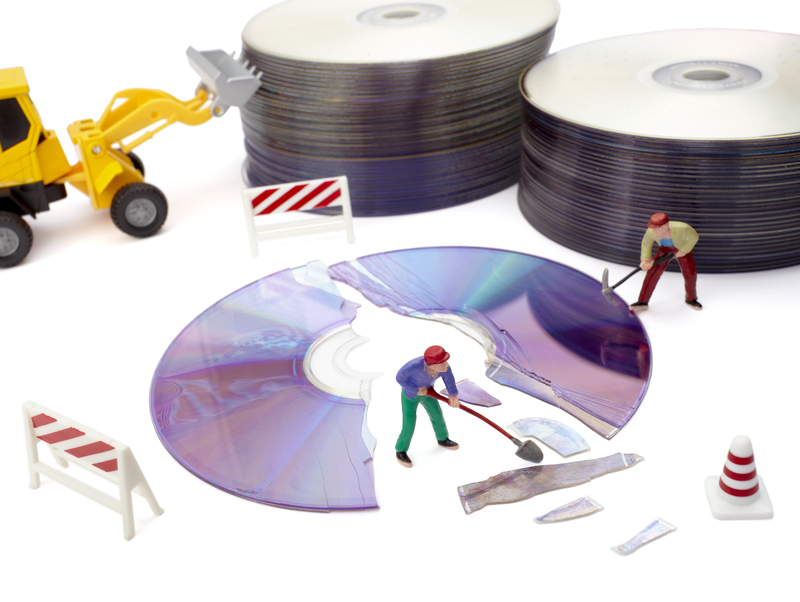Step-by-Step Guide to Managing and Disposing of PPE Waste Efficiently
The advent of the COVID-19 pandemic brought personal protective equipment (PPE) to the forefront of everyday life and work environments. From masks and gloves to gowns and face shields, PPE plays a crucial role in safeguarding individuals from harmful contaminants. However, the unprecedented usage of disposable PPE has triggered growing concerns about PPE waste management and its environmental impact. This comprehensive guide explores how to efficiently manage and dispose of PPE waste, ensuring safety, regulatory compliance, and sustainability.
Why Proper Management and Disposal of PPE Waste Matters
Inefficient or improper handling of used PPE can present serious risks:
- Spread of Infectious Diseases: Contaminated PPE can transmit pathogens if not handled or disposed of correctly.
- Environmental Pollution: Most PPE is made of synthetic, non-biodegradable materials, contributing to plastic pollution in landfills, waterways, and oceans.
- Regulatory Non-Compliance: Failure to follow waste management protocols can result in hefty fines and reputational damage for businesses and institutions.

Understanding PPE Waste: What Qualifies as PPE Waste?
To manage PPE waste efficiently, it's vital to recognize which items are considered PPE and why they're categorized as hazardous or non-hazardous waste:
- Single-use face masks (surgical and N95): Typically contaminated after use.
- Disposable gloves (nitrile, latex, vinyl): Often exposed to biological or chemical agents.
- Gowns and aprons: Used in medical and laboratory settings to prevent splashes and direct contact.
- Face shields and safety goggles: Sometimes disposable if heavily contaminated or damaged.
- Respirators and filters: Require special handling due to their potential for high contamination.
*PPE waste* can arise from hospitals, clinics, testing centers, manufacturing sites, research labs, schools, or even home environments during pandemics.
Step-by-Step Guide to Efficient PPE Waste Management and Disposal
Step 1: Develop a PPE Waste Management Policy
- Identify sources of PPE waste within your facility (workstations, entry/exit points, changing rooms, and medical bays).
- Set clear protocols for the collection, segregation, storage, and final disposal of all types of PPE waste.
- Assign responsibility to trained personnel or teams for managing the process.
- Document procedures and communicate them to all employees, contractors, and visitors.
Step 2: Provide Adequate PPE Waste Collection Infrastructure
- Install clearly labeled PPE waste bins in all relevant areas. Use color-coded bins (e.g., red or yellow for hazardous medical waste).
- Choose bins with lids and foot pedals to minimize hand contact and the risk of cross-contamination.
- Ensure regular emptying schedules and avoid overfilling bins.
- Post instructions near collection points on how to safely remove and dispose of PPE.
Step 3: Segregate PPE Waste According to Type and Contamination Level
- Segregate PPE contaminated with infectious agents (e.g., from hospitals or quarantine facilities) as biohazardous waste.
- Dispose of PPE used for general protection (e.g., gloves and masks worn in non-medical settings) as general waste unless visibly soiled or contaminated.
- Use double-bagging for high-risk waste to prevent leaks and spills during handling and transport.
Step 4: Ensure Safe Handling and Transportation of PPE Waste
- Train staff on safe collection techniques, including proper PPE removal (doffing) to prevent self-contamination.
- Use appropriate PPE such as gloves and aprons when handling PPE waste.
- Seal bags securely and transport them on dedicated trolleys or carts, avoiding manual carrying and public routes.
Step 5: Choose the Appropriate PPE Waste Disposal Method
PPE waste disposal varies depending on the contamination level and local regulations:
- Incineration: The most recommended for infectious or hazardous PPE waste. High temperatures destroy pathogens and reduce waste volume.
- Autoclaving: A steam sterilization process used for decontaminating PPE waste before its safe commercial disposal.
- Landfilling: For non-infectious PPE waste, as per municipal guidelines and after proper treatment, where required.
- Recycling: Some specialized facilities accept uncontaminated PPE for recycling, especially items made of single polymers.
*Always adhere to local regulations and engage certified waste management providers.*
Step 6: Monitor, Audit, and Continually Improve PPE Waste Management Processes
- Maintain disposal records (date, volume, nature of waste, disposal method) for audits and reporting.
- Regularly inspect storage and collection areas for compliance and hygiene.
- Update policies and training as new regulations or technologies emerge.
PPE Waste Reduction and Sustainability Strategies
While managing and disposing of PPE waste is crucial, waste minimization should be a parallel focus:
- Switch to reusable PPE (where safe and feasible) such as washable masks, gowns, and face shields.
- Partner with specialized recyclers that process PPE plastics into new materials.
- Educate staff about responsible PPE use to avoid unnecessary consumption.
- Select suppliers who design sustainable and recyclable PPE products.
Integrating circular economy principles, such as recycling and reuse, offers long-term environmental and economic benefits.
Legal and Regulatory Requirements for PPE Waste Disposal
Proper PPE waste management is governed by national and international regulations such as:
- OSHA (Occupational Safety and Health Administration): Mandates workplace safety including waste handling practices.
- EPA (Environmental Protection Agency): Sets standards for hazardous waste management and landfill operations.
- WHO (World Health Organization): Provides global guidelines, especially for healthcare PPE disposal during epidemics.
- State / Local Laws: May have additional requirements for PPE waste segregation, storage, transportation, and treatment.
Non-compliance can result in financial penalties, closure orders, and harm to public health. Organizations must stay updated on relevant legislation and engage with certified PPE waste disposal contractors when necessary.
Best Practices for Safe and Efficient PPE Waste Disposal
- Display clear signage near bins to educate users on correct PPE disposal procedures.
- Encourage prompt disposal of used PPE to minimize environmental contamination and clutter.
- Limit direct contact with contaminated items--use tools or disposable liners as barriers.
- Disinfect storage and handling areas regularly with approved cleaning agents.
- Perform regular risk assessments to adapt PPE waste management to changing needs or health emergencies.
Common Mistakes and How to Avoid Them
- Mixing PPE with general waste: Always use designated bins. Mixing can compromise waste treatment systems and pose risks.
- Overfilling or not sealing bags: Exposed waste increases the risk of spillage and contamination.
- Ignoring staff training: Ongoing education ensures correct procedures are followed, especially during staff turnover.
- Delaying disposal: Prolonged storage attracts pests and increases odor or infection risk.
Key Takeaways: Efficient PPE Waste Management and Disposal
- Recognize all types of PPE and their waste profile.
- Implement separate bins and clear signage for effective segregation.
- Follow safe handling, secure packaging, and approved transportation protocols.
- Select the right disposal method based on contamination risk and local regulations.
- Prioritize waste minimization and recycling opportunities.
- Train employees and regularly review your PPE waste management policy.

FAQs about Managing and Disposing PPE Waste
Can you recycle PPE waste?
Some PPE items made from single-type plastics can be recycled through specialized facilities. However, most contaminated PPE (especially from healthcare) should not be mixed with recyclables to prevent infection risks.
What is the safest way to dispose of masks and gloves at home?
Seal used masks and gloves in a bag, tie it securely, and dispose of it in the general waste. After handling, always wash your hands thoroughly.
What should businesses do with large volumes of PPE waste?
Large-scale waste generators (hospitals, factories) must follow regulated storage, labeling, and disposal through licensed medical waste contractors.
How can we minimize PPE waste in the workplace?
Consider reusable PPE where possible, communicate clear usage guidelines to reduce misuse, and explore partnerships with PPE recycling programs.
Conclusion: Responsible PPE Waste Handling Protects Health & the Planet
Proper management and disposal of PPE waste is not just a regulatory necessity--it's a responsibility that ensures the health of people and the planet. By following structured, step-by-step PPE waste handling protocols, organizations and individuals can minimize infection risks, efficiently segregate waste, and support global sustainability efforts. Embrace these best practices and make a significant difference in health, safety, and environmental impact.
Need further guidance or a custom PPE waste disposal solution? Consult your local environmental agency or a certified waste management provider for expert support.
